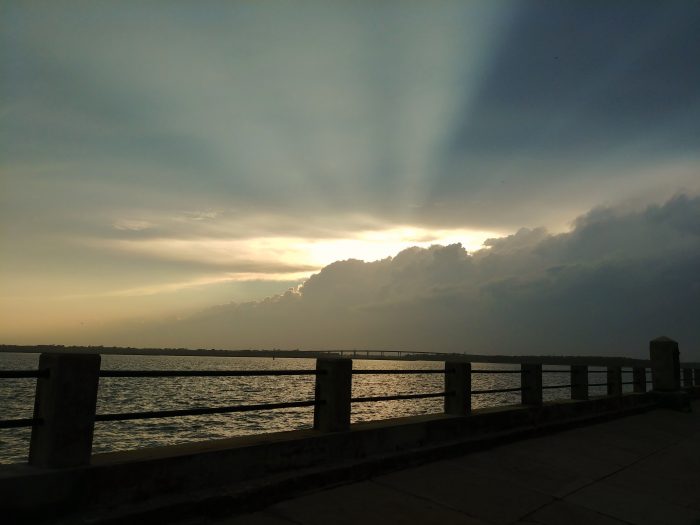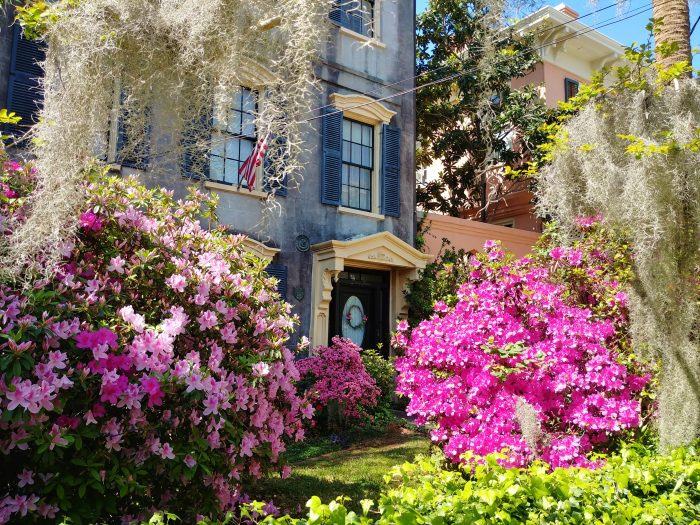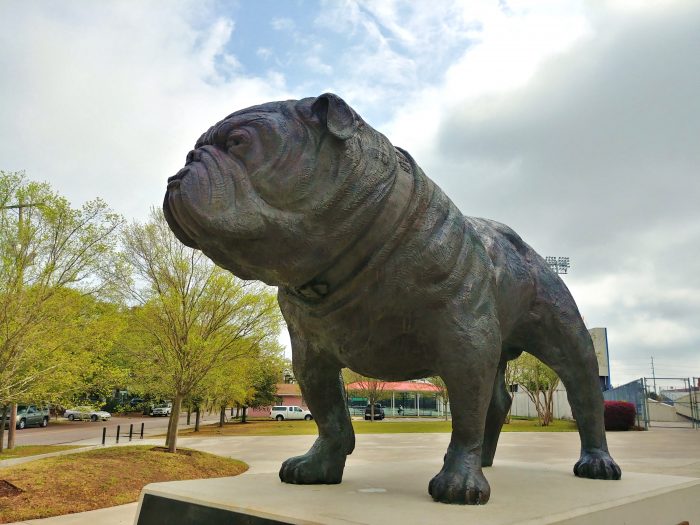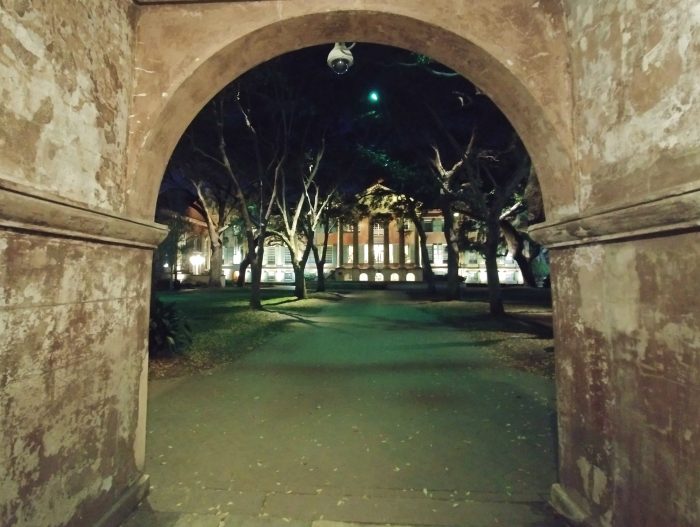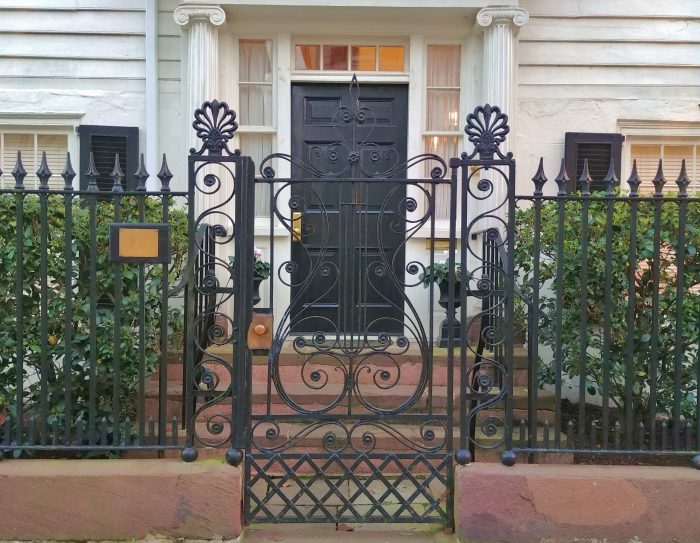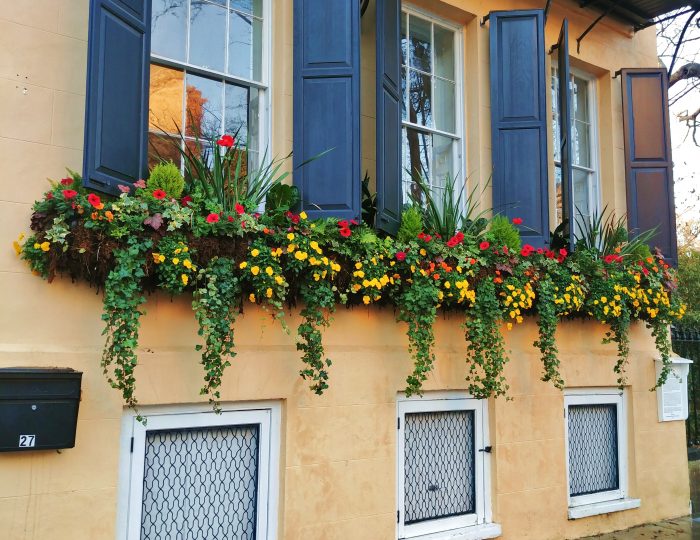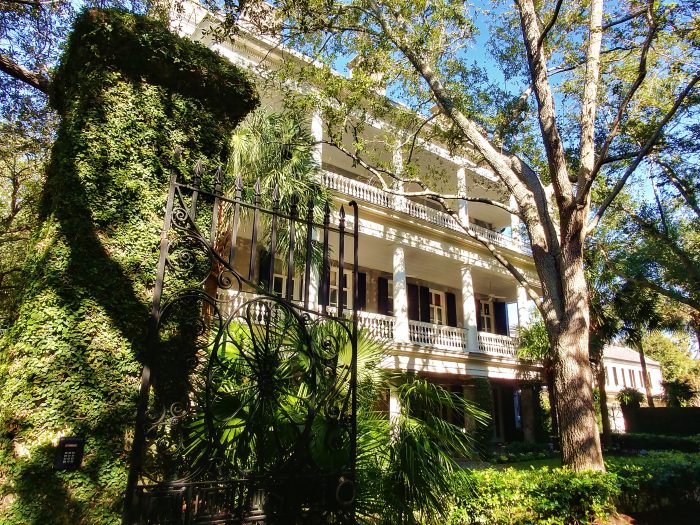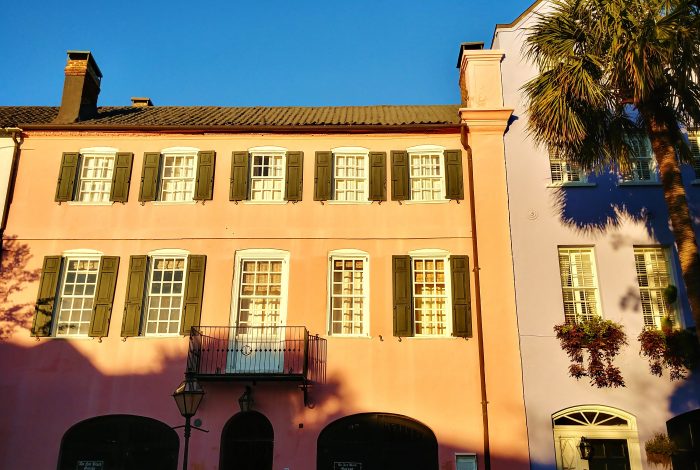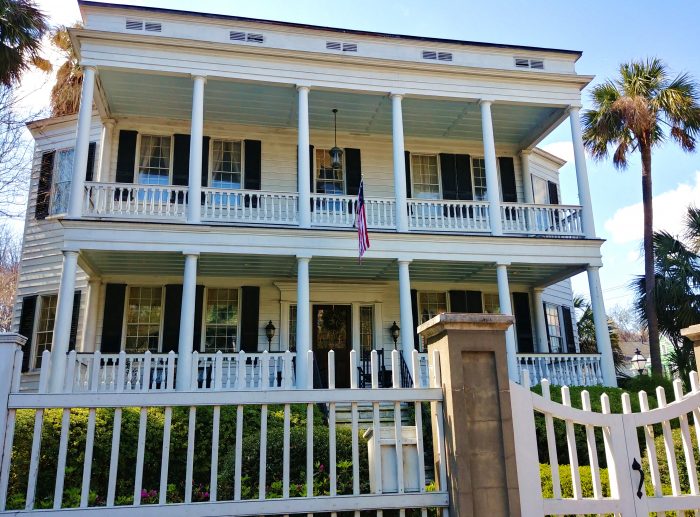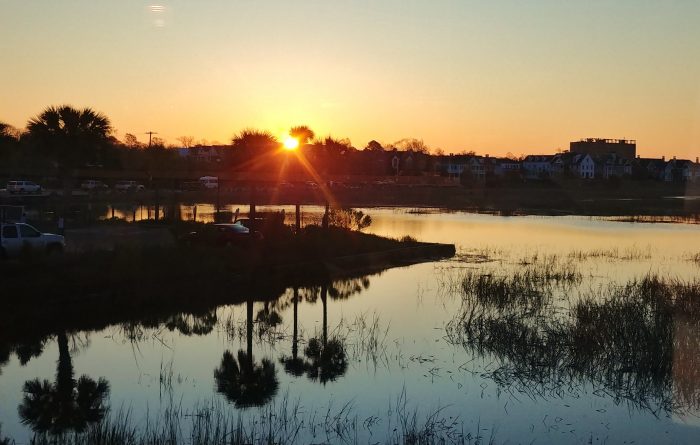A wonderful evening sky, as seen from the Low Battery. The Low Battery, which runs from the Coast Guard Station to “the Turn” — where it runs into the High Battery — is about 5000 feet long and took 13 years to complete. What a great spot to watch the sun set.
Sweet Baby James
This wonderful spring scene on Rutledge Avenue is set in front of a house that was built in 1850 by a transplanted New Englander, James Taylor. While sharing the name, he was not inducted into the Rock & Roll Hall of Fame in 2000 — that was this James Taylor, who had Carolina in his mind (NC, but close enough).
Awww… A Puppy
This little pooch can be found outside of the Citadel’s Stadium, honoring the the Citadel Bulldogs. The stadium is named after Brigader General Johnson Hagood, who commanded the Confederate forces in Charleston during the Civil War and later became the governor of South Carolina. Nice puppy.
Porters Lodge
The Porters Lodge, built about 1850, framing a nighttime view of Randolph Hall (built 1829-30) and the Cistern at the College of Charleston.
Gorgeous Gate
This beautiful gate fronts the house at 75 Tradd Street, which was built in about 1815 by Dr. Aaron Leland. Leland served as the minister at the nearby First Scots Presbyterian Church — which is the fifth oldest in Charleston. While traffic was not as much of an issue then, he did ensure he would have a short commute.
The Youngest Sister
These beautiful flower boxes hang on the front of the youngest of the houses known as the Three Sisters on Meeting Street. Built following the Revolutionary War, this house is distinguished from its sisters who were constructed before the Revolution.
A Charleston Subdivision
This beautiful antebellum house (circa 1857) on Legare Street is located on land that was originally part of the property of the pre-revolutionary era Miles Brewton House (one of the most significant Georgian houses in the United States). If you are going to live in a subdivision in downtown Charleston, this looks like a good way to go!
Primary Color of the Rainbow
This house on East Bay Street holds a very special distinction on Rainbow Row — it was the very first to be restored on the row (which is the largest collection of attached antebellum houses in the United States). In 1931, Dorothy Haskell Porcher Legge undertook its restoration — kicking off the pastel collection that is now one of the iconic sites in Charleston.
Built by Scotch
Built in 1805 by the Adam Tunno, the “King of the Scotch” (which has nothing to do with single malt), this beautiful house was later home to a governor of South Carolina, Andrew Macgrath (he served less than a year, with his term ending when he was arrested by Union troops). Located on Ashley Avenue, at the corner of Cannon Street, the house’s original property stretched to both the Ashley River and Calhoun Street.
The Marina
While sitting at the Marina Variety Store Restaurant, home of the best breakfast in Charleston, part of the show can be the sun rising above the Charleston peninsula. As one of the few places downtown where you can have a beautiful water view while eating or drinking, it gives you a great chance to reflect… or see the reflections. Whatever the reason, the MVSR is a wonderful place to start the day.
- « Previous Page
- 1
- …
- 105
- 106
- 107
- 108
- 109
- …
- 188
- Next Page »
